MATTERS OF OBSESSION
‘Over my Dead Body’: Giving voice to the victims of femicide
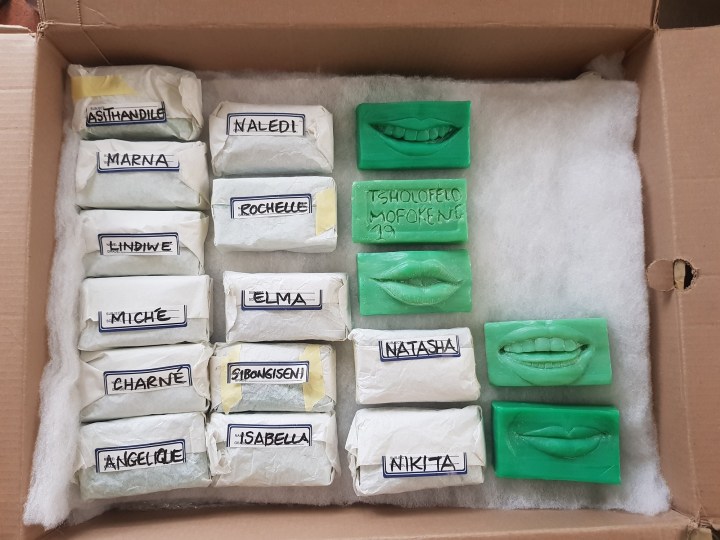
The multimedia artist, activist, contemplative and survivor of domestic violence Andrea Walters will be exhibiting her work ‘Over My Dead Body’ at the Durban Art Gallery from 3 March to 15 May.
The exhibition is centred on the mouths of 50 women who were murdered by their partners, which are sculpted out of bars of soap and mounted at eye-level on an 8m Perspex shelf. Walking past these poignant images and being informed about them, the viewer is exposed to the unfolding traumatic history of each individual woman.
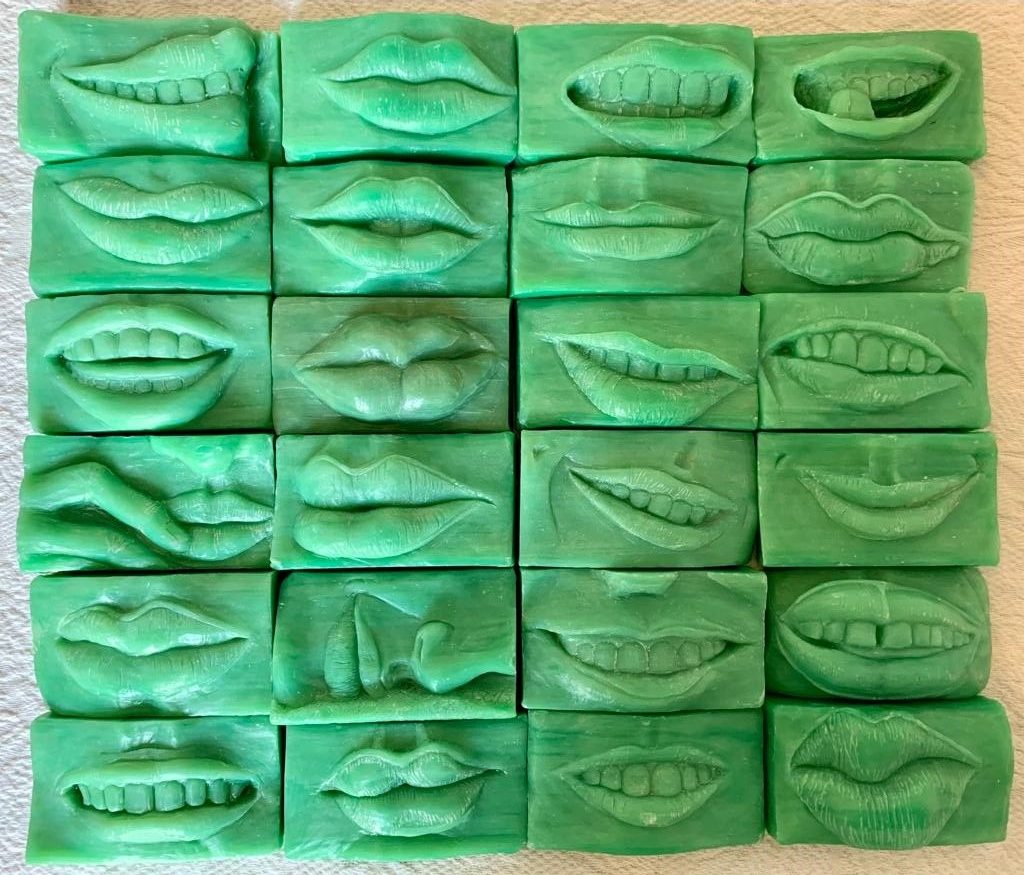
Image: Andrea Walters
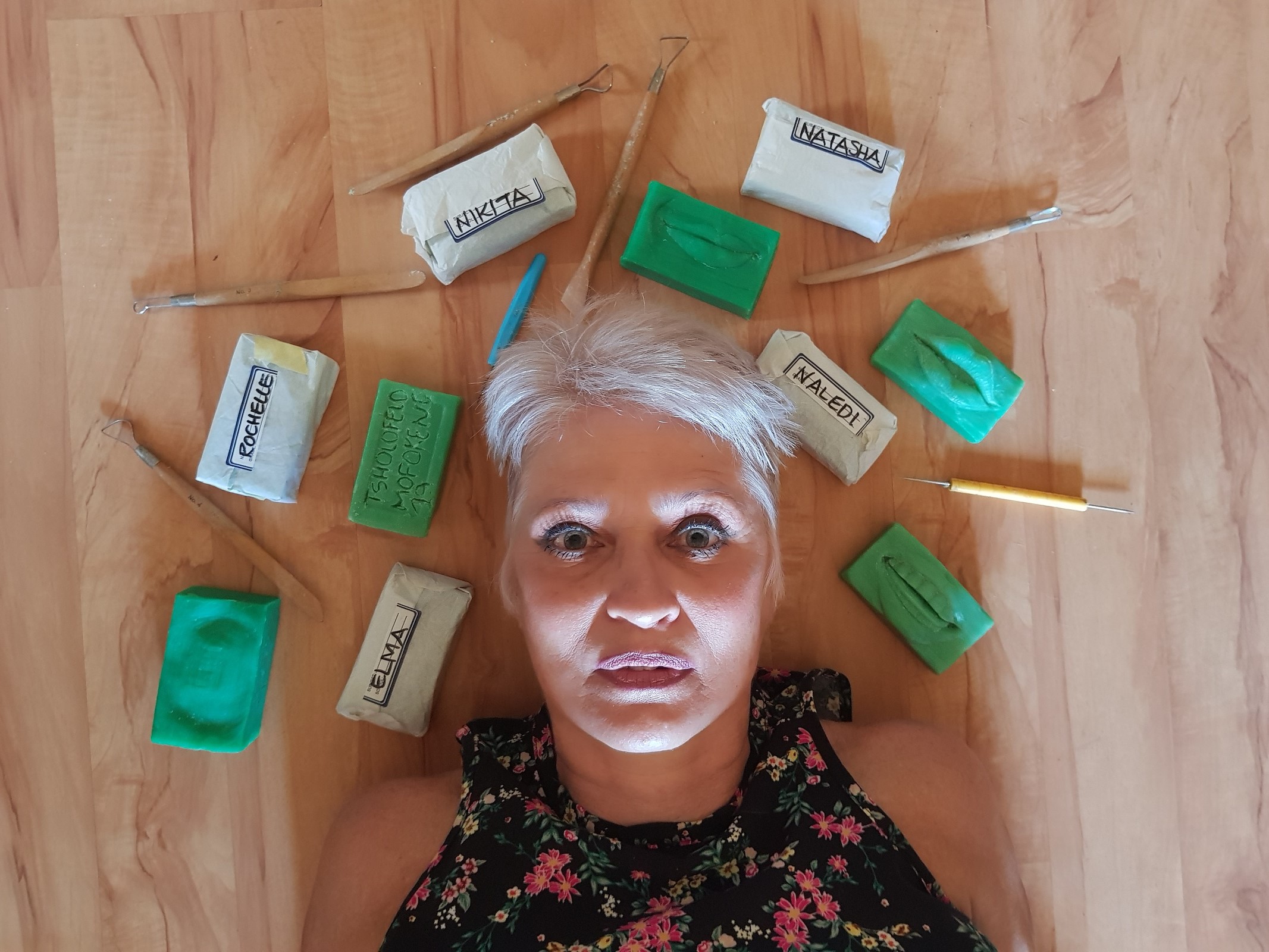
Andrea Walters. Image: Illa Thompson
“It is a powerful activist action,” said Dr Gwen Miller, a senior lecturer in visual arts at Unisa. It is also a monument to these women and to the mothers, siblings, children and others who loved them, Miller added.
Sunlight soap has been sold in South Africa for more than 100 years. At a cost of around R16 a bar it is accessible to women from all walks of life.
“I was looking for something generic, something banal that is common to all South African women. Poor women and even rich women use Sunlight soap,” Walters explains. “The other interesting thing that I found out is that dead bodies in certain African cultures are washed with Sunlight soap.”
“The work is shocking but also exquisitely beautiful,” Miller notes. “The care with which each mouth has been carved can be compared to the care that a mother might have for a child. Every mouth is so different. And the mouth is such a powerful part of the woman’s body. It is sensual and it speaks of sexuality, but it is also silenced…”
Like many artists who make art their career later in life, Walters has used her art to reflect on her history and to heal herself. She is passionate about ensuring that the stories of victims of femicide who were silenced and marginalised in life and through their unnatural deaths are brought to the forefront of public consciousness; that nobody is left immune.
Unisa art students are encouraged to use their art to think through their lives and about issues that matter, Miller explains, adding: “They tend to work with issues that hold a personal and social power, issues that have close political impact. Andrea started working with this theme in her third year and she did poignant third- and fourth-year exhibitions around abuse against women.”
Walters’ fourth-year exhibition, Abject of Desire, was centred on Reeva Steenkamp, whose carved mouth is also part of this exhibition. During her extensive research, Walters accessed offcuts of Kevlar, which is used to test-fire guns in investigations into homicide and other serious crimes, and used Steenkamp’s last post on Instagram before she died, which was a response to femicide victim Anene Booysen’s death (also included in the exhibition).
“I woke up in a safe, happy home. Not everyone did,” Steenkamp posted.
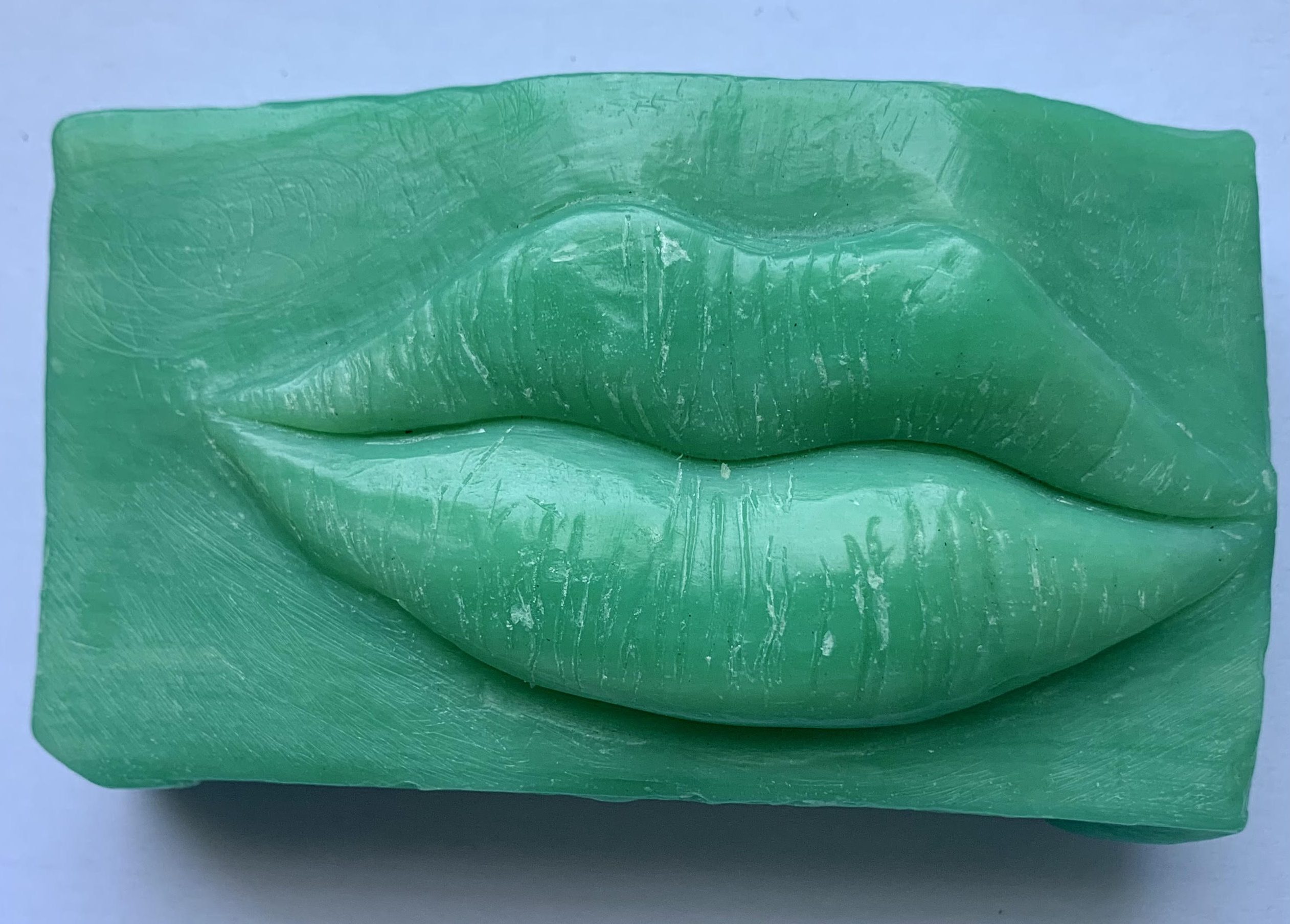
Reeva Steenkamp. Image: Andrea Walters
In another exhibition, Walters replicated the image of a woman used to symbolise public ablution facilities to create an image of four women holding hands with the words: “Yesterday, Today and Tomorrow”. In South Africa, four women die as a result of gender-based violence every day.
On the wall adjacent to the display, there is a 15-minute documentary film of a close-up of Walters’ own mouth which names each woman in alphabetical order, giving their age and an account of their death.
Chanelle Henning (26)
After dropping her son at a crèche, Chanelle Henning was shot dead by a motorcyclist – a hit arranged by her estranged husband who wanted sole custody.
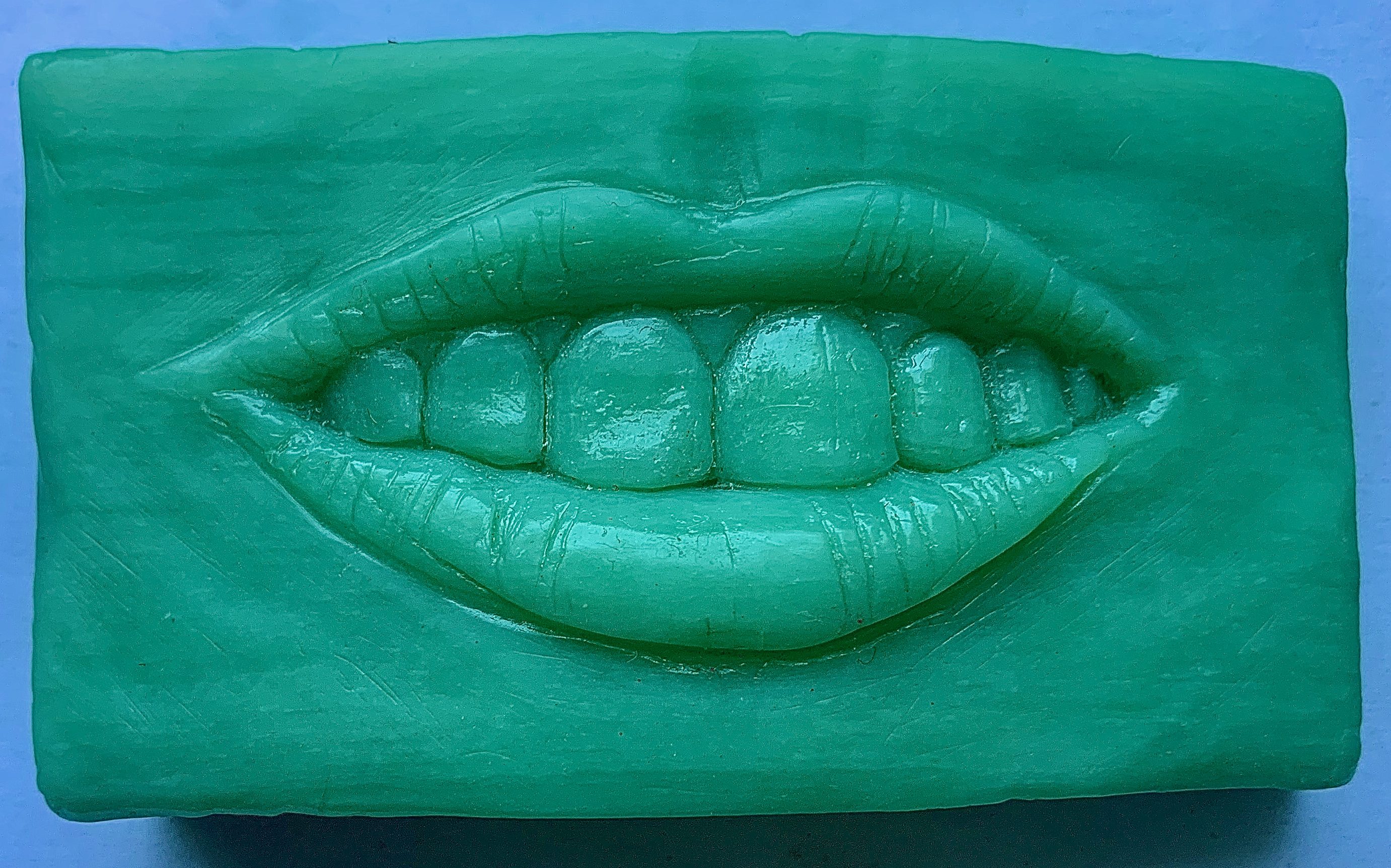
Chanelle Henning. Image: Andrea Walters
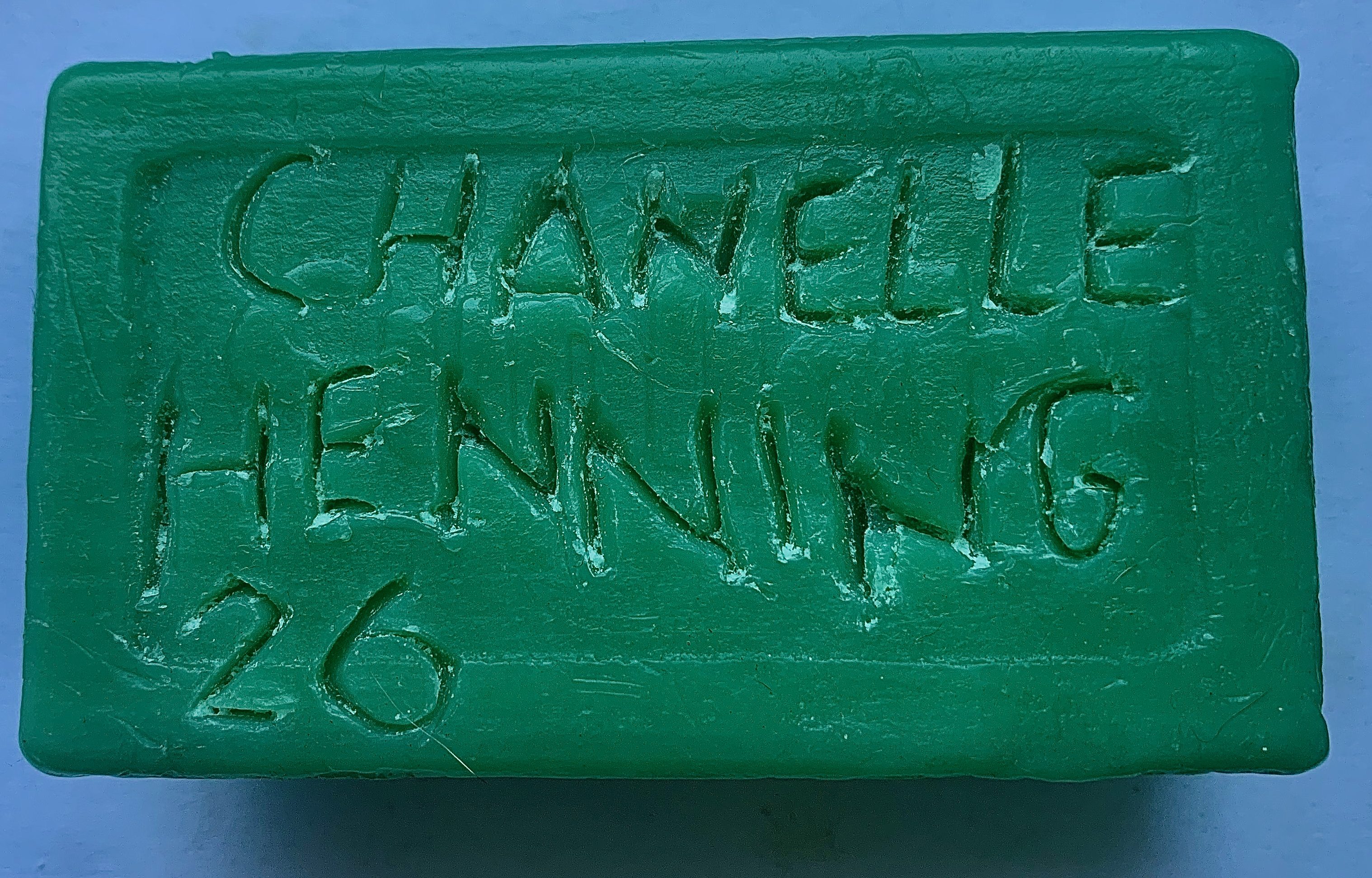
Chanelle Henning. Image: Andrea Walters
Gomolemo Legae (18)
Gomolemo Legae was raped and stabbed 25 times by her boyfriend. When he realised she was still alive, he bought petrol and set her alight.
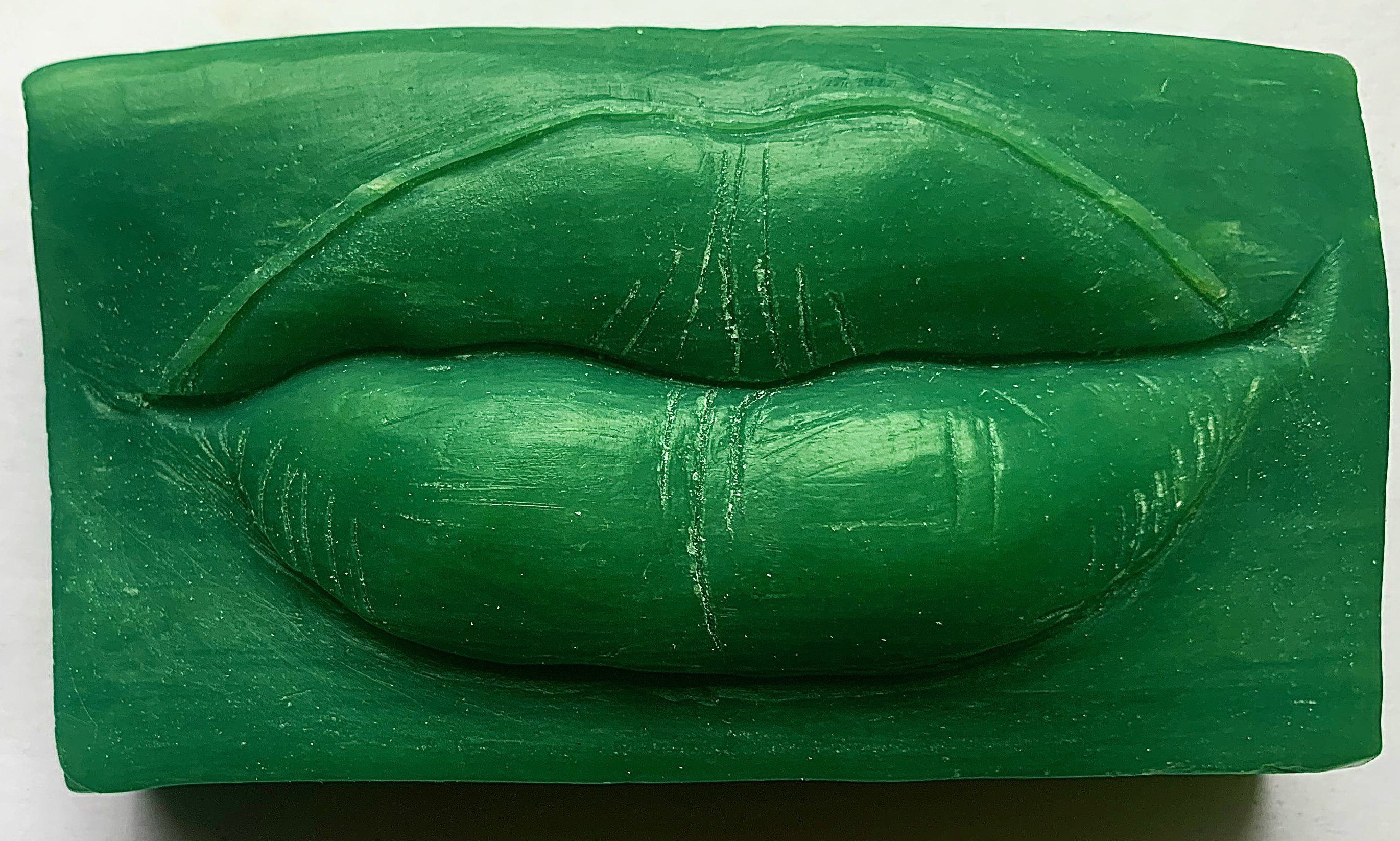
Gomolemo Legae. Image: Andrea Walters
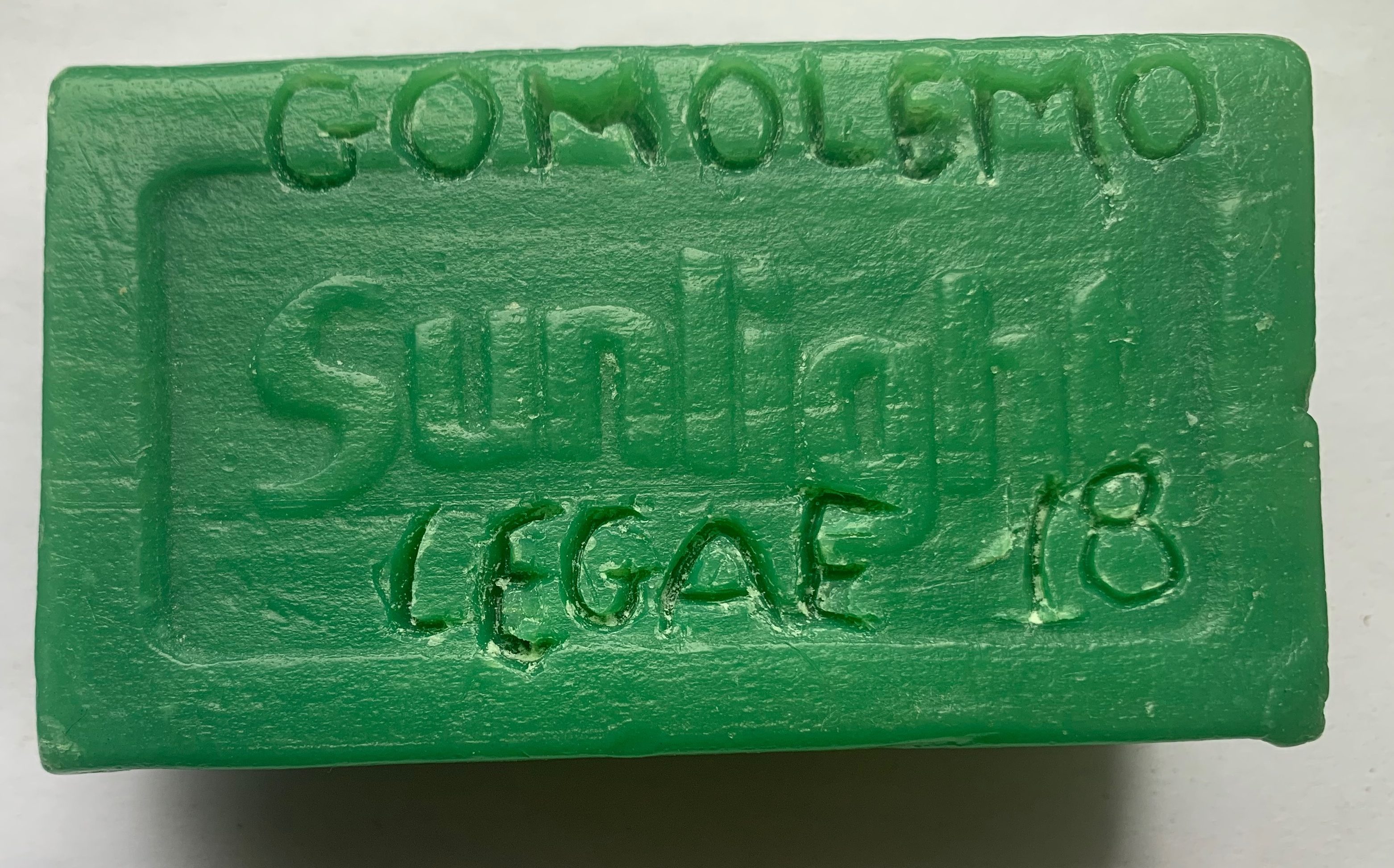
Gomolemo Legae. Image: Andrea Walters
Mbalenhle Cele (24)
Mbalenhle Cele’s ex-boyfriend rushed into the family homestead, knocking over her 70-year-old grandmother, and stabbed her to death before fleeing.
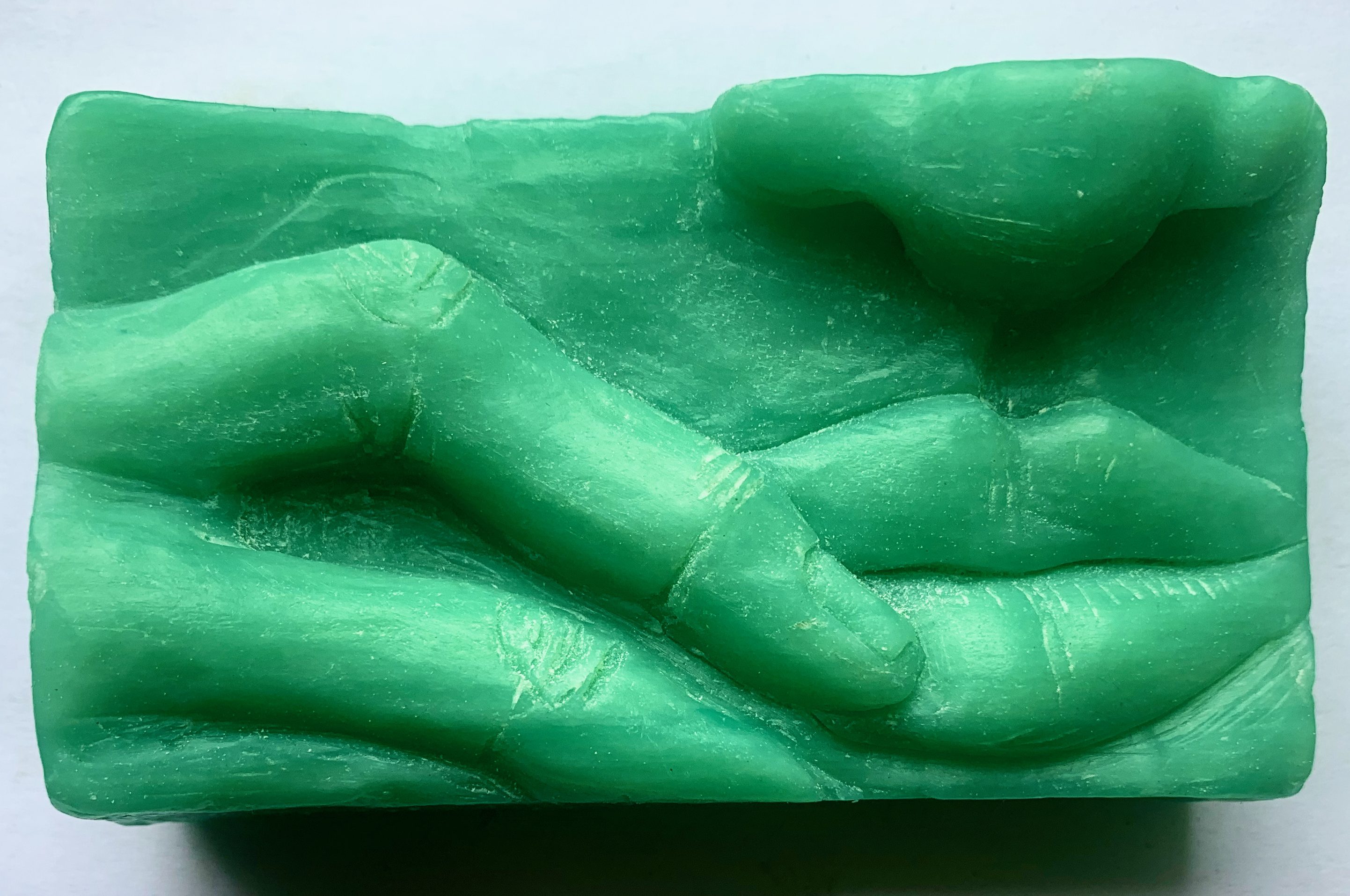
Mbalenhle Cele. Image: Andrea Walters
Unknown woman is for the women who are killed by their husbands or lovers, their bodies concealed and justice denied.
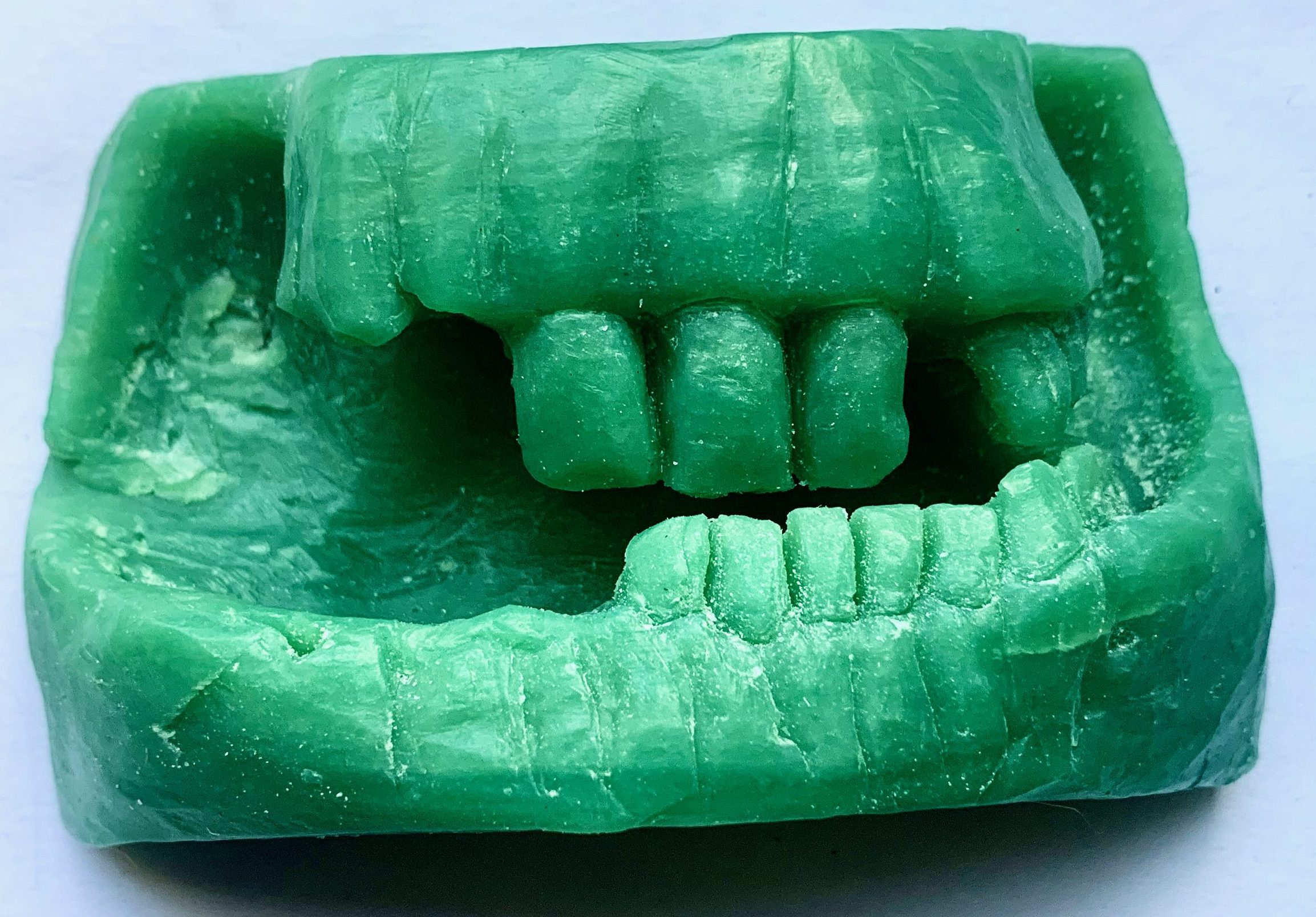
Unknown woman. Image: Andrea Walters
Karabo Mokoena (22)
Karabo Mokoena was murdered by her ex-boyfriend. He transported her body in a rubbish bin to a field where he poured acid and petrol on her body and set it alight.
Tshegofatso Pule (29)
Heavily pregnant with her married lover’s child, she was shot in a hit and hanged from a tree. He denies any involvement.
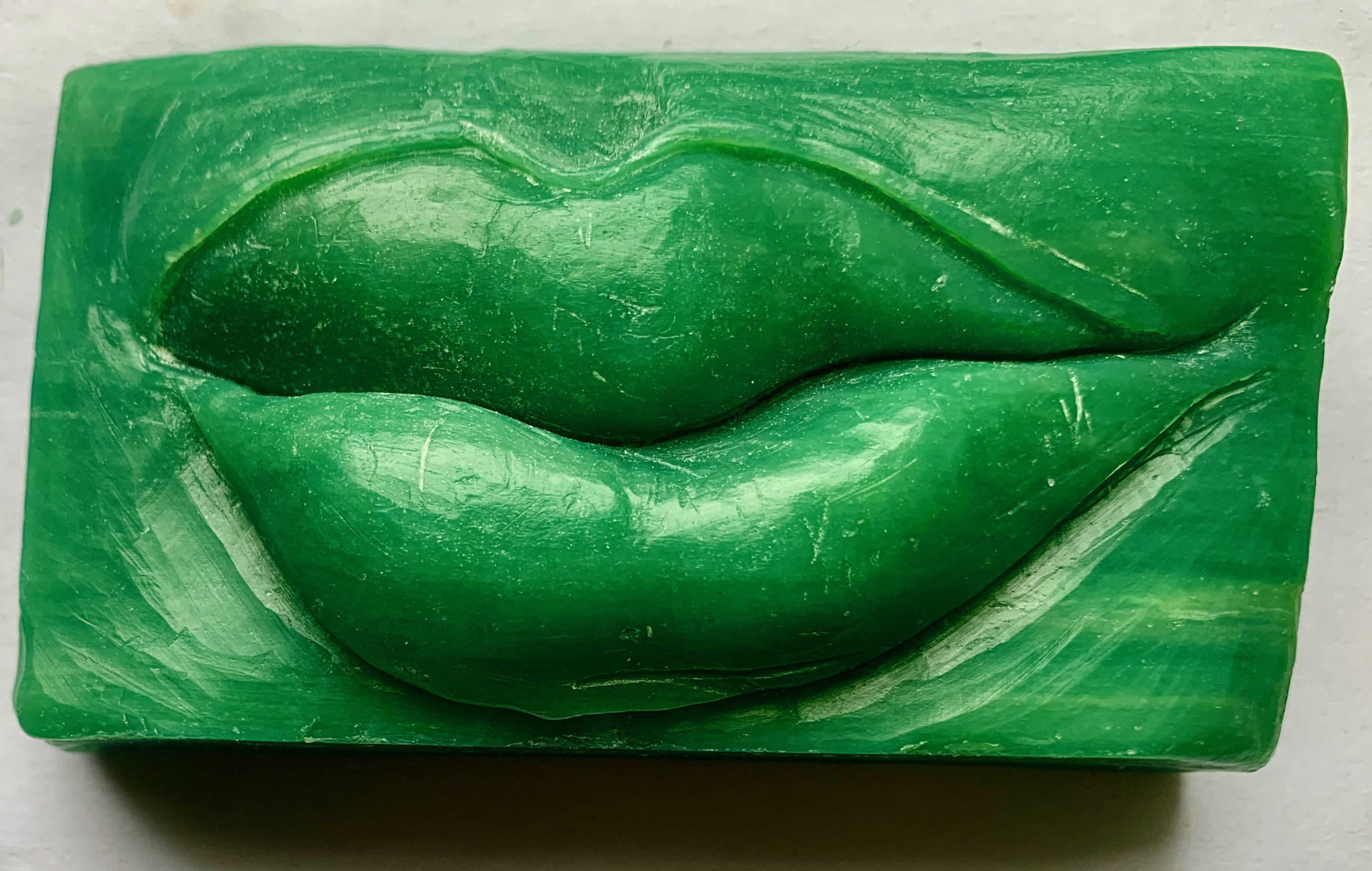
Tshegofatse Pule. Image: Andrea Walters
Anene Booysen (17)
Anene Booysen was gang-raped and disembowelled by her ex-boyfriend and his friends. Only two men were charged.

Anene Booysen. Image: Andrea Walters
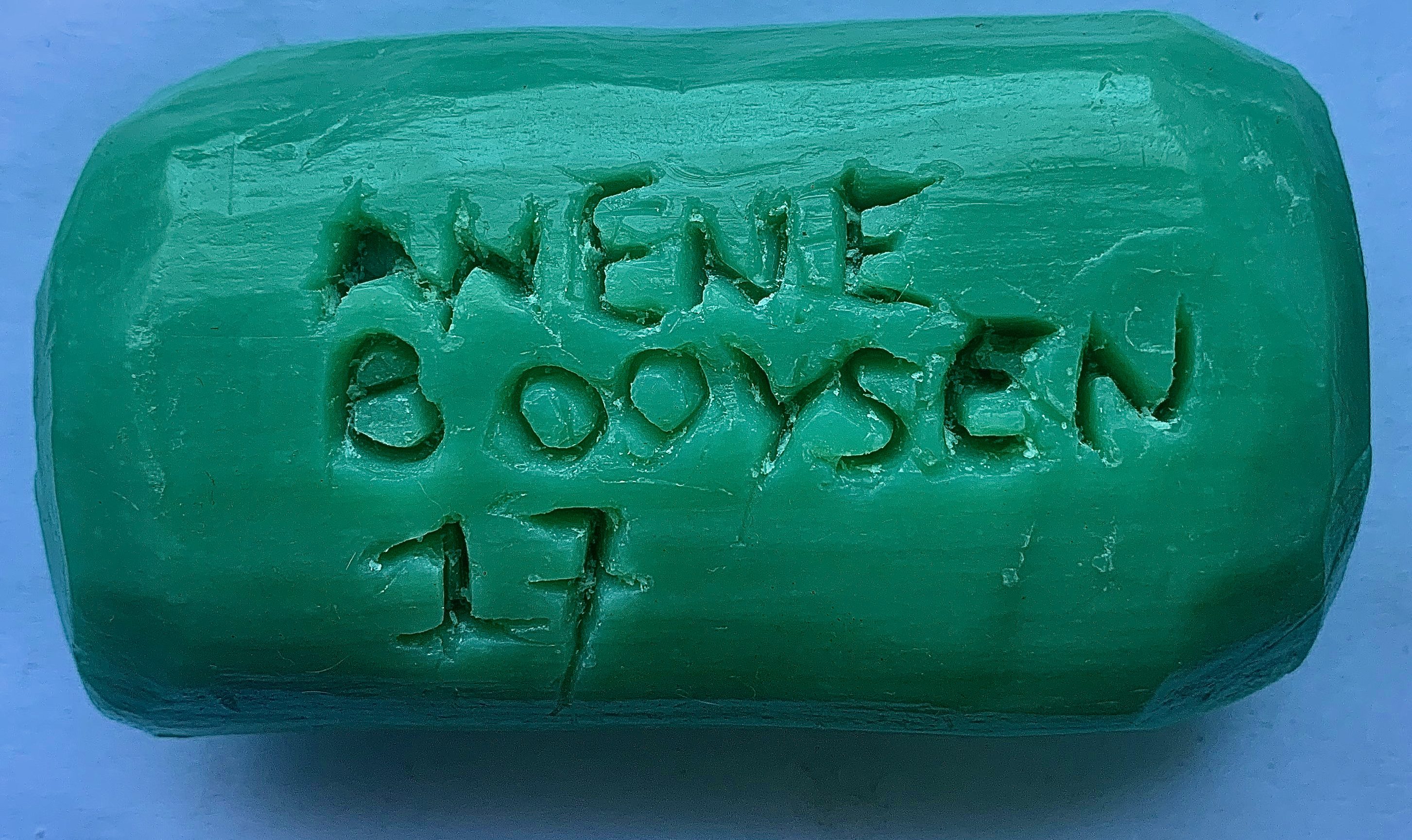
Anene Booysen. Image: Andrea Walters
Baby-Lee (Leighandre) Jegels (25)
South African junior bantamweight boxing champion Baby-Lee Jegels had a protection order against her ex-boyfriend, a policeman. He shot both Baby-Lee and her mother, Rita, who survived.
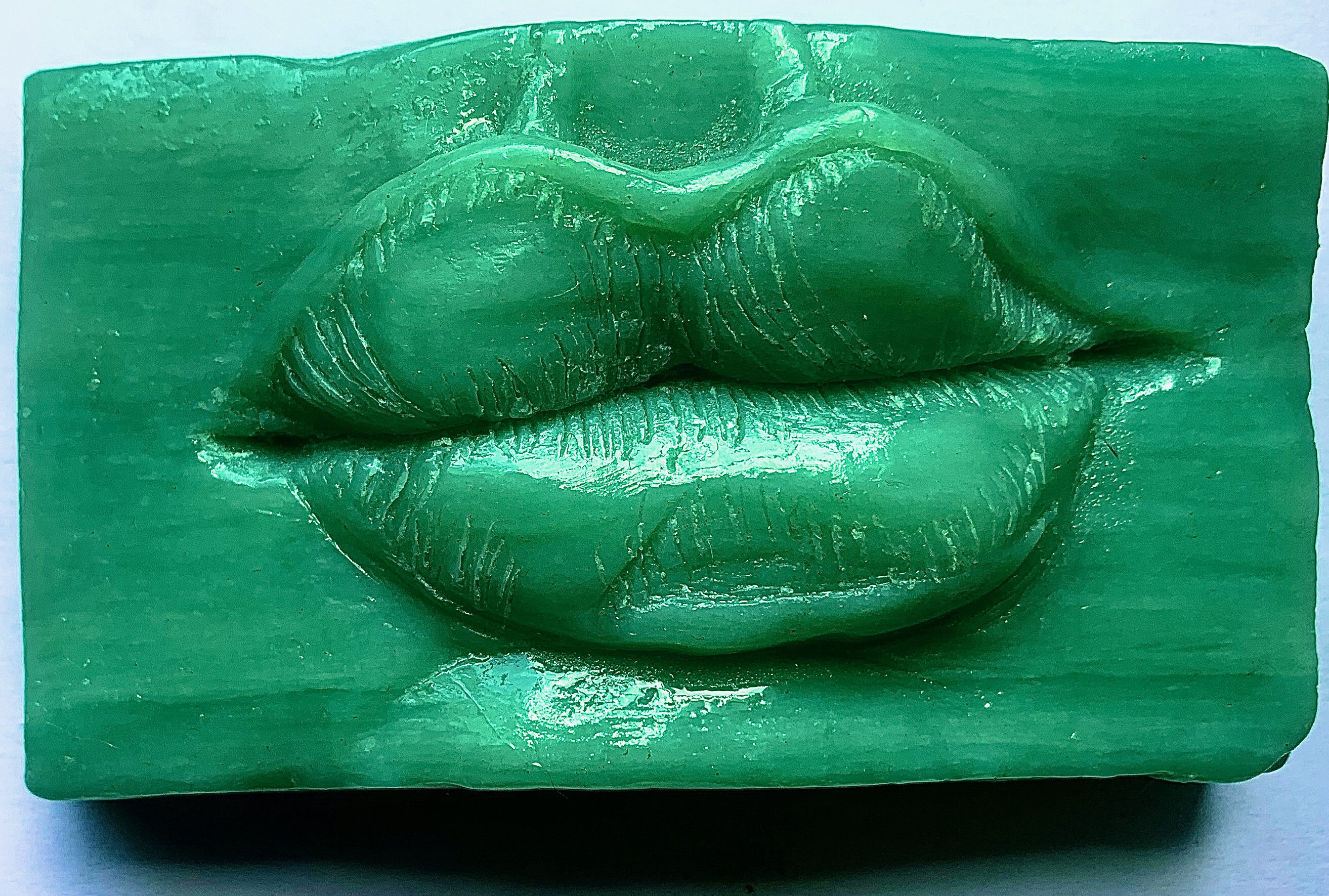
Baby Lee Jegels. Image: Andrea Walters
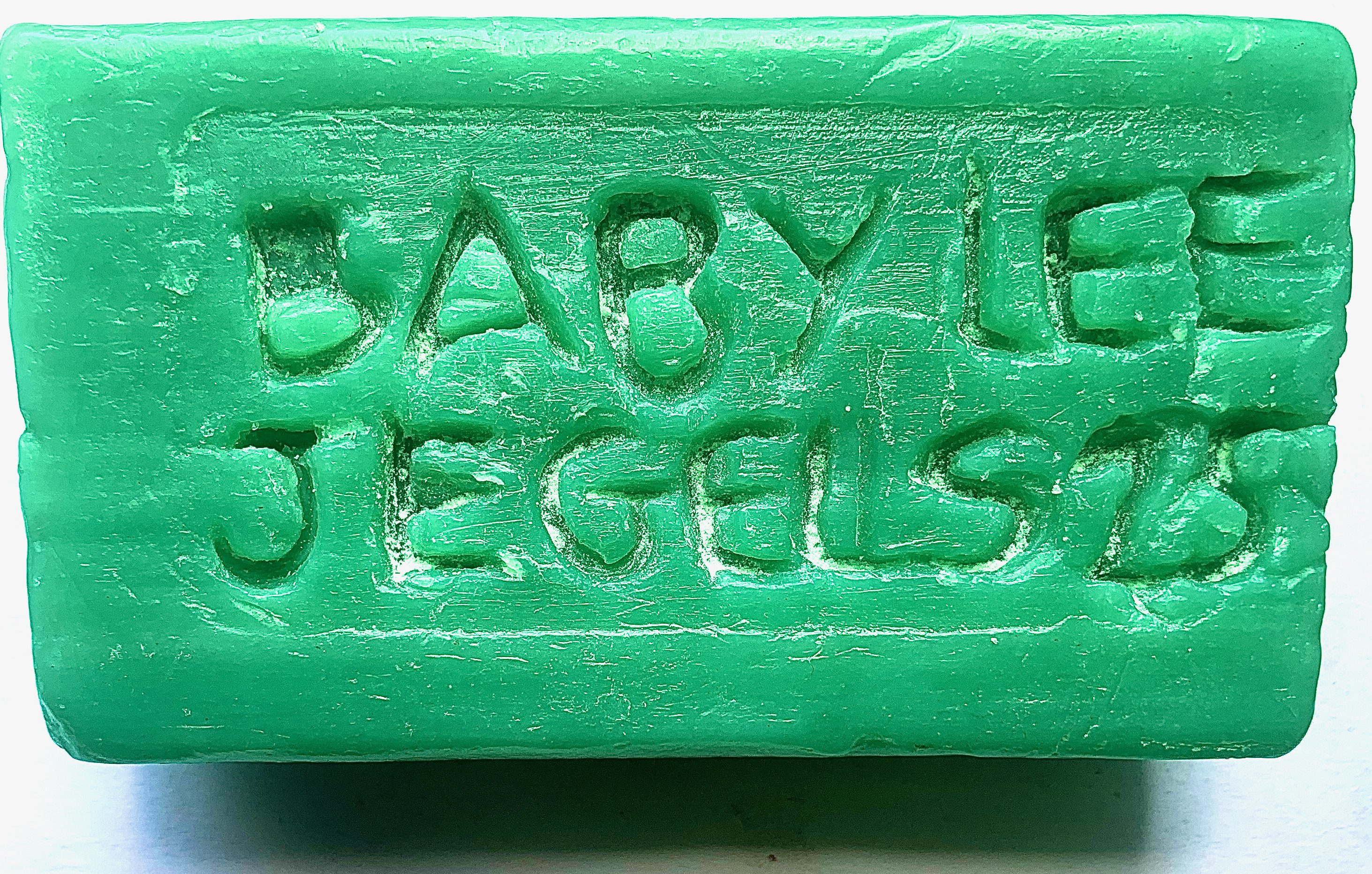
Baby Lee Jegels. Image: Andrea Walters
Devashnee Doorasamy (30)
After she was assaulted and forced to drink anti-freeze, her husband pawned her cellphone and concealed her body for several days. Although she sustained blunt force trauma and neck injuries, her husband was acquitted.
Janet Scott (54)
Janet Scott was so severely beaten and kicked by her partner that the forensic pathologist Dr Sibusiso Ntsele stated: “I haven’t observed injuries of this sort on one person in my career.”
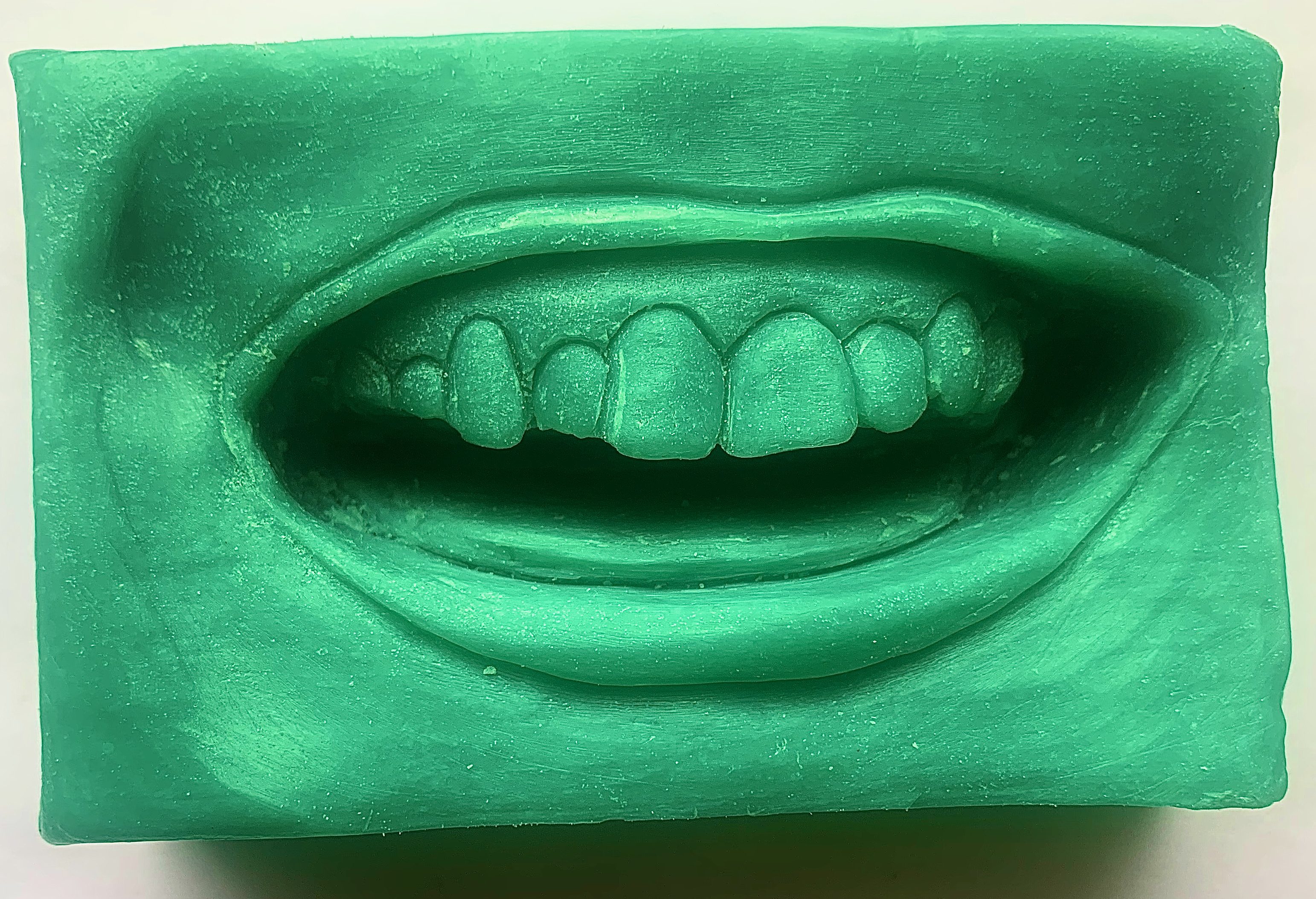
Janet Scott. Image: Andrea Walters
The exhibition challenges viewers to reflect on what President Cyril Ramaphosa referred to as South Africa’s “second pandemic”, of gender-based violence.
“I have a scar on my lip; I have a dent from concussion in my skull, but I am one of the lucky ones, I got out alive”, says Walters, who was unable to walk unaided into a hospital casualty ward and spent weeks in a psychiatric institution.
The exhibition cuts across race, class, sexual orientation, age and marital status. It includes famous women like Reeva Steenkamp, but also unknown women whose deaths remained unnoticed and undocumented.
“Andrea is speaking the names of those who have become unspeakable. There is a sense of honouring each individual that society sees as unimportant, as superfluous. For me, it is an act of grace. She is, in a sense, giving another life to those who have been seen as inconsequential,” says Miller.
To one side of the display, a rusted bed representative of intimate relationships is suspended in mid-air and beneath it is a sheet stained with Sunlight soap and rust.
“This is the locus of love and intimacy as well as domestic violence. It is the most intimate space in a home; it is also the site of violence and death,” explains Walters.
Miller sees this as a very powerful symbol of domestic abuse. Only the springs of the bed, the bare bones, remain, and the rust is deposited on a sheet that she has placed beneath it.
“They speak metaphorically to a narrative of loss and trauma. The rust on the sheet speaks to a residue of trauma. The suspended skeleton of the bed evokes a sense of irrevocable damage and scarring, of the leftover that remains as its rust is transferred into the fibres of this white sheet.”
For Miller, the work invites debate around residue and what is left over. The idea of residual memory is central to Walters’ work, she says. Abuse, whether it is emotional or physical, remains in the body, in the psyche.
She says: “The material she uses is taking you back to the domestic realm which triggers memory.” Society’s indifference is part of the residue. “We cannot be bystanders. We have to analyse what is wrong in our society and enact change.”
On a cloth used by undertakers to cover dead bodies, Walters has handwritten the names of the women killed by their partners and embroidered them in gold thread.
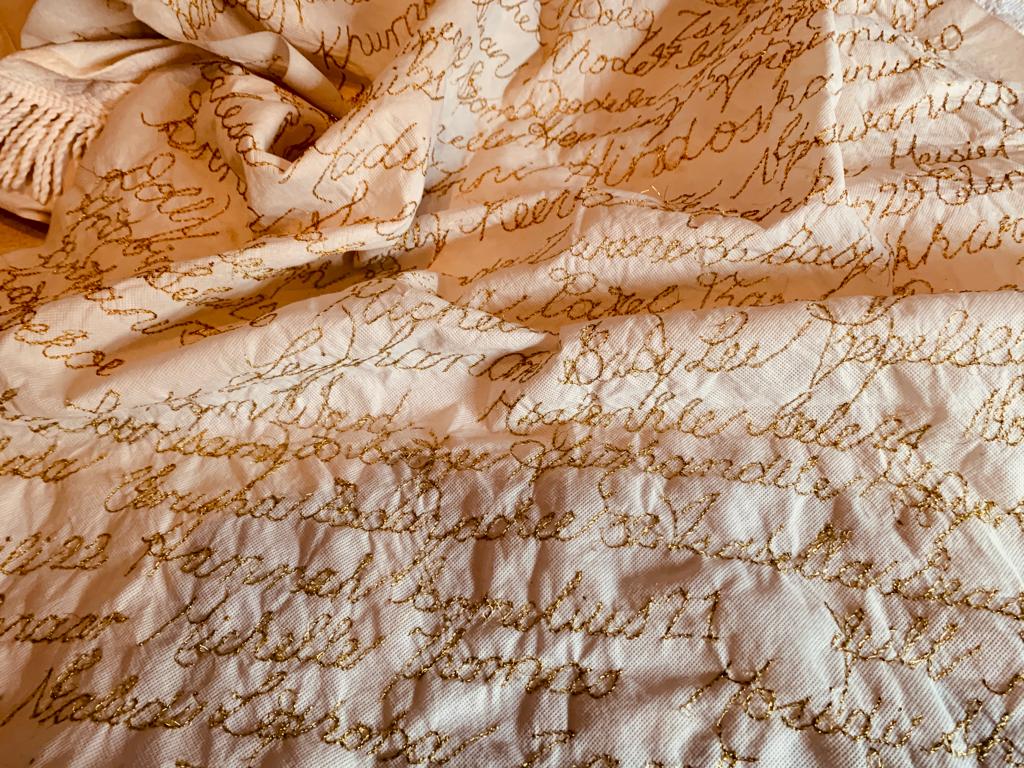
Shroud with names of victims embroidered in gold thread. Image: Courtesy of the artist
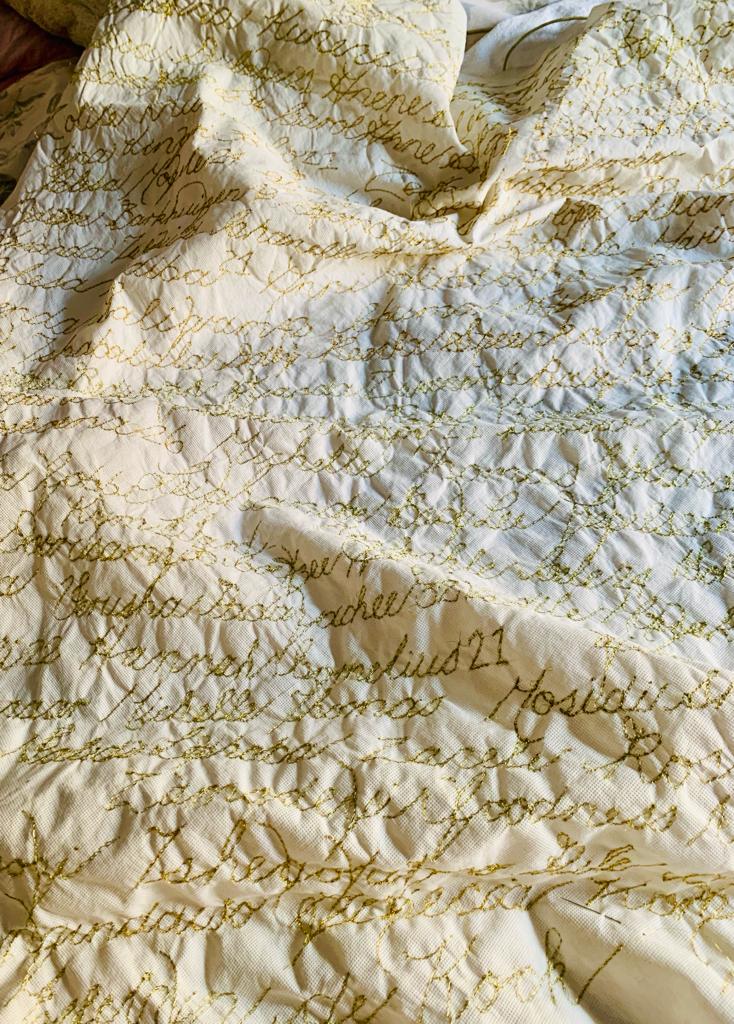
Shroud with names of victims embroidered in gold thread. Image: Courtesy of the artist
“By using my own handwriting, I am inserting myself into the work because I could have died.
“Some artists disagree with what I am doing because I am naming people, but for me it is absolutely essential that I name these women. I don’t want them to be forgotten. Everything is in the public domain. All my research comes from the print media or the internet,” Walters says.
“Andrea works from photographs. She has done a lot of research and it is a project that has gone on for years. The fact that she is re-rendering the women is an act of contemplation and the end product is a form of quiet, contemplative, performative activism,” Miller says.
The shroud embroidered with the names of the victims is draped over a mortuary gurney at the entrance to the exhibition and accompanied by the sound of a mournful dirge sung by Mariechan Luiters.
Luiters, a member of the successful female band Jamali, who has also pursued a solo career as a singer, made a voluntary contribution to the exhibition.
“I don’t want any form of payment in return for my contribution; I have also survived abuse at the hands of a partner,” she explains.
“I went into the booth at the studio and dimmed the lights and just started playing the piano. I asked the engineer to loop the instrumental and I will do whatever comes out of me and whatever pours out of me will pour out of me.
“And then I told the producer to take the music out and just leave my voice. So it is just my voice with some effects added to it. I layered it and there is no music, it is just a capella-style, humming melodies. I use the word ‘thula’ because it means ‘quiet’. That word just came out. I didn’t decide on it; I didn’t plan it. It just came out: ‘thula, thula’,” says Luiters. DM/ ML
Andrea Walters’ “Over My Dead Body” is at the Durban Art Gallery from 3 March to 15 May. Enquiries/bookings: 031 311-2264

‘Over My Dead Body’ at the Durban Art Gallery. Image: Supplied



















 Become an Insider
Become an Insider
Comments - Please login in order to comment.